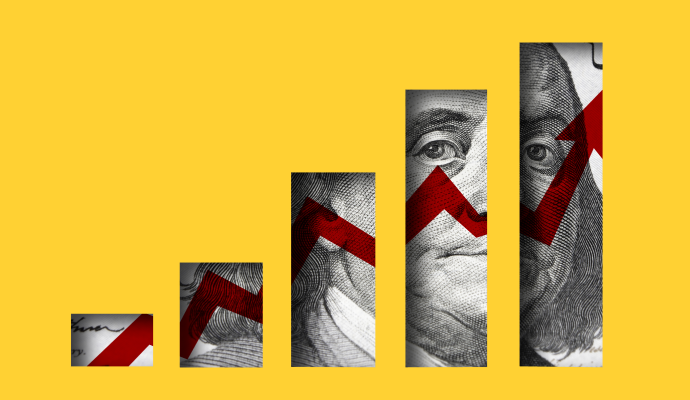CMS: Healthcare Spending Accelerated, Reaching $4.5T in 2022
US healthcare spending grew by 4.1% in 2022, faster than the rate in 2021 but slower than in 2020.

Source: Getty Images
- US healthcare spending picked back up last year, reaching a total of $4.5 trillion in 2022, according to the latest numbers from CMS.
Healthcare spending growth accelerated, growing by 4.1 percent in 2022, the data published in Health Affairs showed. That is faster than the increase of 3.2 percent in 2022 but significantly slower than the rate of 10.6 percent in 2020. Spending experienced a dramatic shift three years ago because of the COVID-19 pandemic, which spurred a spike in expenditures as government-funded programs aimed to support public health.
Government-funded public health spending for COVID-19-related support continued to decline in 2022, causing a slowdown in national healthcare spending, CMS reported. However, strong growth in Medicaid and private health insurance spending somewhat offset reduced public health support, leading to growing expenditures on healthcare in 2022.
The share of the economy attributed to healthcare spending as measured by the gross domestic product (GDP) was 17.3 percent, down from both the 18.2 percent share in 2021 and the highest share in history of 19.5 percent in 2020, CMS reported. On a per capita basis, national healthcare spending increased by 3.7 percent.
“[Healthcare] expenditures since 2020 have reflected volatile patterns associated with the COVID-19 pandemic and the federal government’s response to the public health emergency,” Micah Hartman, a statistician in the CMS Office of the Actuary and first author of the Health Affairs article, said in a statement.
“The growth in health care spending in 2022 of 4.1 percent was more consistent with the prepandemic average annual growth rate of 4.4 percent over 2016–19. It remains to be seen how future [healthcare] spending trends will materialize, as trends are expected to be driven more by health-specific factors such as medical-specific price inflation, the utilization and intensity of medical care, and the demographic impacts associated with the continuing enrollment of the baby boomers in Medicare,” Hartman continued.
The prices of medical services are high overall, prompting criticism and outrage from consumers and other industry stakeholders. However, CMS data revealed slower growth in both hospital and physician prices last year.
Spending on hospital care increased by 2.2 percent (versus 4.5 percent in 2021) to reach $1.4 trillion. CMS said less spending on hospital care across private health insurance, Medicare, and Medicaid, as well as a decline in other private revenues, caused the slowdown in spending growth. There was also slower growth in prices and a decline in hospital days and discharges.
Physician and clinical services spending increased by 2.7 percent to $8,84.9 billion, slower than the increase of 5.3 percent in 2021. Similarly, spending growth slowed across all major payers last year, as well as the use of services and prices.
In contrast, retail prescription drug prices increased by 1.2 percent in 2022, contributing to a 8.4 percent increase in overall drug spending.
CMS also reported a historic high of insured people in 2022 at 92 percent of the population. Of the major insurance programs, Medicare enrollment grew by 1.9 percent versus 1.7 percent in 2021 — or by 1.2 million individuals — with enrollment in Medicare private plans increasing by 8.5 percent and fee-for-service enrollment decreasing by 3.0 percent. Overall, Medicare accounted for 21 percent of spending by major sources of funds.
While baby boomers aging into Medicare has increased spending, Medicaid spending grew by 9.6 percent to $805.7 billion (compared to Medicare’s $944.3 billion). It was the third consecutive year of growth above 9.0 percent. Enrollment also continued to grow at 7.2 percent versus 11.1 percent in 2021.
Meanwhile, private health insurance spending increased by 5.9 percent to $1.3 trillion. The rate is slightly lower than the increase of 6.3 percent in 2021. Enrollment also increased the fastest since 2015 at 1.5 percent, or 2.9 million individuals.
Additionally, out-of-pocket spending increased by 6.6 percent to $471.4 billion in 2022.
